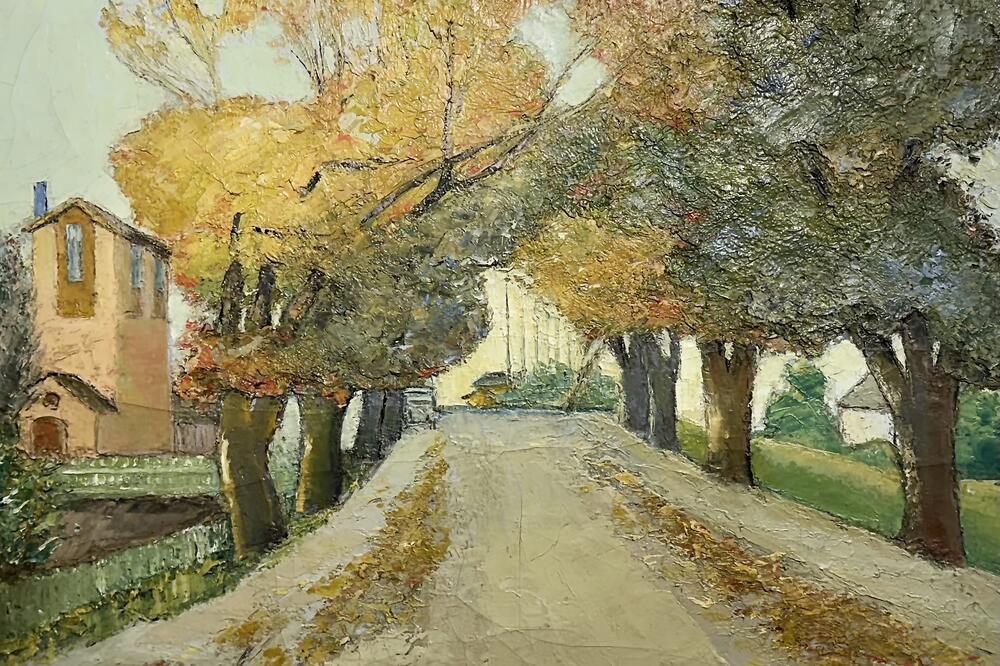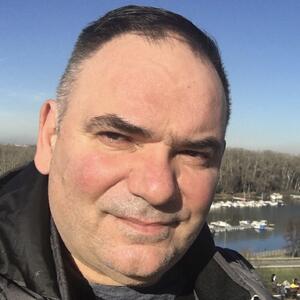In the XNUMXs, I often traveled by train. One of the main railway interchanges on the Sarajevo-Belgrade railway was Vinkovci. Birthplace of Sava Šumanović. Looking out of the window from the compartment in winter, I remembered the passing landscapes - fields under snow, rows of trees, bell towers of small churches. Landscapes made famous by this painter.
The first meeting with his canvases will happen in that decade in the Belgrade National Museum. During my post-graduate studies in the sociology of culture, I used to sometimes go to the building of the Administration of Funds, a neo-Renaissance-eclectic beauty from 1903 that has housed the National Museum since 1952. In the permanent exhibition, I spent most of my time in front of the works of 20th century painters - I was equally interested in Picasso's "Head of a Woman" as well as Chagall's "Peasant and Cow", Mondrian's "Composition II" or Gauguin's "Tahitian Woman". In 1915, when humanity was already bathing in its own blood, Renoir's "Bather" was created. This guarantees us that some traces of beauty will survive our cataclysms.
I especially liked to stand in front of Sava Šumanović's canvases. Of all our painters from that period, he produced the fastest intuitive reaction in me. His melancholic complexion matched my inner being.
When I left the National Museum for the last time in the late eighties, before my departure from Belgrade, I had no idea that I would part with the artist's work for several decades.

This time, chance wanted me to find myself in Leskovac in December 2023, a few days after the opening of the representative exhibition of Sava Šumanović in the Leskovac Cultural Center. I rejoiced as if the painter had been born to me.
His name was written on a billboard, on the front of my favorite building in Leskovac, Kaloderma Palace, which was built in 1927 by the sons of the founder of the soap factory, Jovan Vlajčić. I want to see some kind of hidden harmony in it - the former administrative building erected by the heirs of the Leskovac soap and cosmetics manufacturer, transformed into a cultural center, now like a shell preserves 28 works of my favorite Serbian painter. And probably, on this rainy morning, Sava and I are the only two people from Srem here in the south by place of birth.
I'm already in front of the building around nine in the morning. I enter the atrium, where there are boards with the painter's biographical information. This room shows what Leskovac would have been like if it had not been destroyed by Allied bombing in 1944.
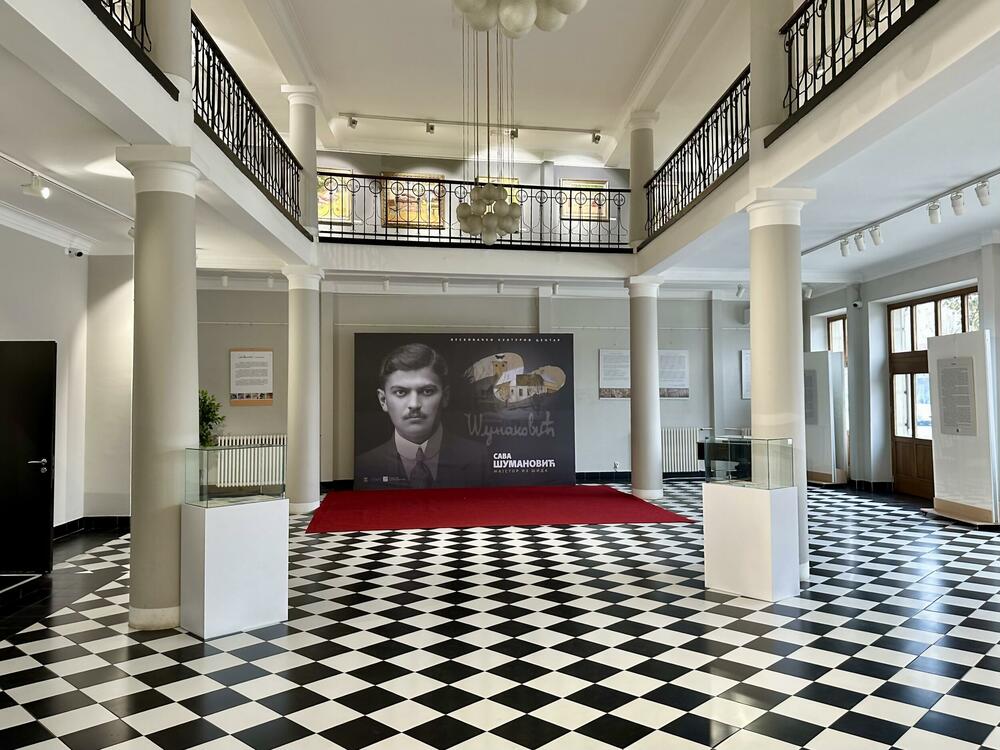
They inform me that the exhibition at the gallery does not open until 10. I go to a cafe on the other side of the street and flip through the pages of Sava's life.
Flipping through life
Father Milutin, a forestry engineer, moved with his family from Vinkovci to Šid, where they are from, when the boy was four years old. It was later recorded that the father wanted his son to become a lawyer. But Sava Šumanović, a high school student from Zemun, who had already fallen irreversibly under the sway of the muse, discovered a poet of color and light in himself during painting lessons with Isidor Jang. In Zagreb, at the Higher School of Arts and Crafts, he acquired solid craft foundations for his art. What explained my own preference for Šumanović's paintings is the fact that the painter spent his years in Zagreb hanging out with the Croatian poet Antun Branko Šimić. Sava was only two years older, he arrived in Zagreb in 1914, and Šimić a year later. Later, Šumanović painted the way Šimić sang: sometimes, with bright colors, suppressed thoughts speak even from nudes or still lifes. In the poem "Poets in Life", Šimić wrote the verse: "We carry the poem in our view". Applied to Sava Šumanović, this would be completely correct. Sava carried poetry in his vision, and spent his life looking for a way to really paint the poem he saw.
I browse decade by decade of the painter's life, the departure from Zagreb to Paris, the Cubist years, occasional returns to Šid, repeated departures to Paris, then the Šid decade, the maturation of his own style, the Second World War, Ustasha violence and crimes against the painter. And it's already ten o'clock, it's time for me to go, to see 28 of the total of 800 paintings and 400 drawings and sketches that he created in his lifetime.
Pictures under guard
The gallery is already receiving its first visitors, an elderly gentleman, whom I later hear is a collector, loudly explains to a man who follows him silently, general places from Sava's life. People who are not artists and own works of art really think they know what art is better than others. I talk briefly with Ivana Ristić, in charge of public relations and skilled host of a series of programs that I have attended.
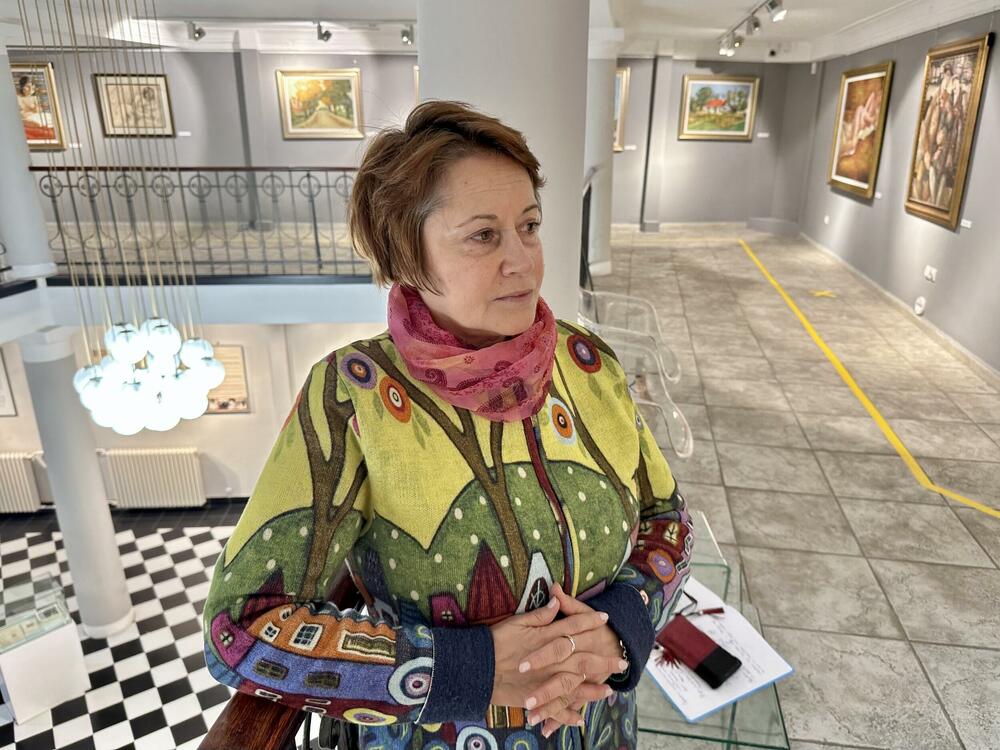
The most interesting part of the story about the exhibition was not only the opening, which I could not attend - it was well attended, says Ivana. Admittedly, there were exhibitions of Sava Šumanović in the distant seventies and eighties in the Army House and the Museum, but in a time prone to forgetfulness, a break of several decades made Sava Šumanović shine in Leskovac as if he was there for the first time. Ivana and her team went to Šid, where the professionals of the "Sava Šumanović" Picture Gallery loaded the protected pictures into a special van according to a strict procedure, and then they were joined by police officers with long pipes. Exciting like in a movie.
Could the artist have guessed that some of his paintings would travel through Serbia under armed escort? What would you think of that? I thank Ivana and dedicate myself to the pictures. I'm careful not to step on the yellow line on the floor in front of them, because the alarm, I accidentally tried that right away, works fine.
Between Paris and Sid
Although the nudes and landscapes have made the artist famous, my attention is first drawn to a work from the artist's penultimate year in Paris. Luxembourg Park in 1929. The darker, somewhat expressionistic strokes on the canvas could not possibly fit into one of my afternoons in the same place, almost ninety years later. My day is airy in memory, with more light and life. It's like I can still hear the murmur of people sitting on benches or grass.
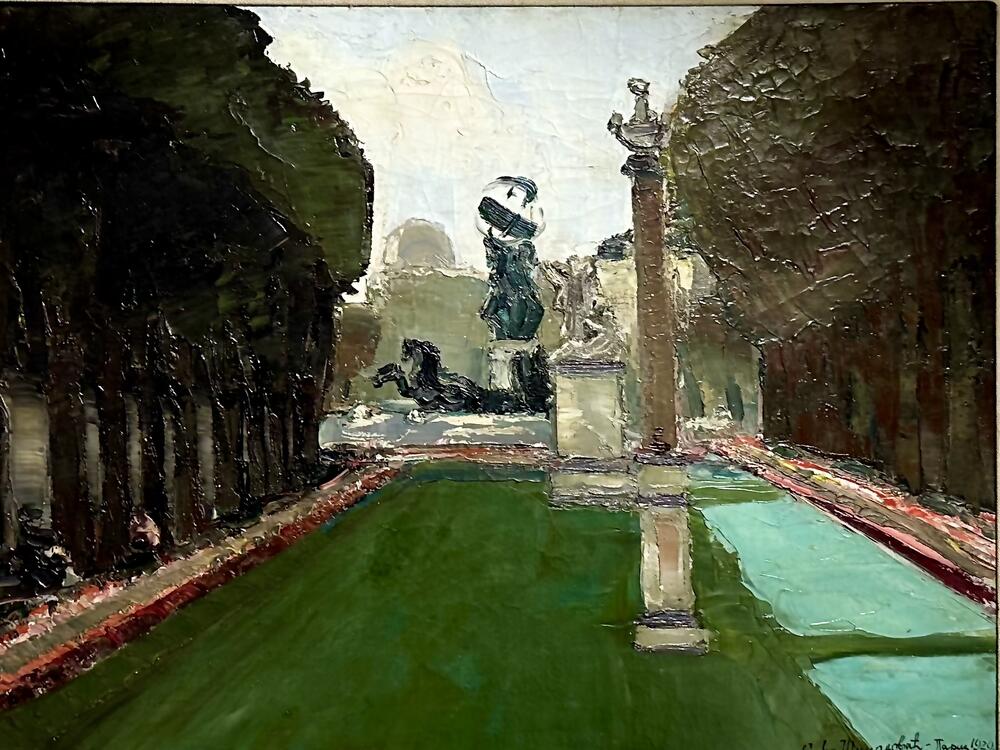
Now the painter's vision of that space covers my memory, it will nestle in my stock of images as another Luxembourg park in my life.
I remember that in Paris, Sava Šumanović hung out with the young international painting elite, but also with the writer and diplomat Rastko Petrović, who recited Rimbaud to him in French, and Sava translated it all into paintings.
The next surprise was a portrait that I had not seen before. "Rusian Woman in Orange" from 1934 radiates such quiet power that I returned to the painting twice.
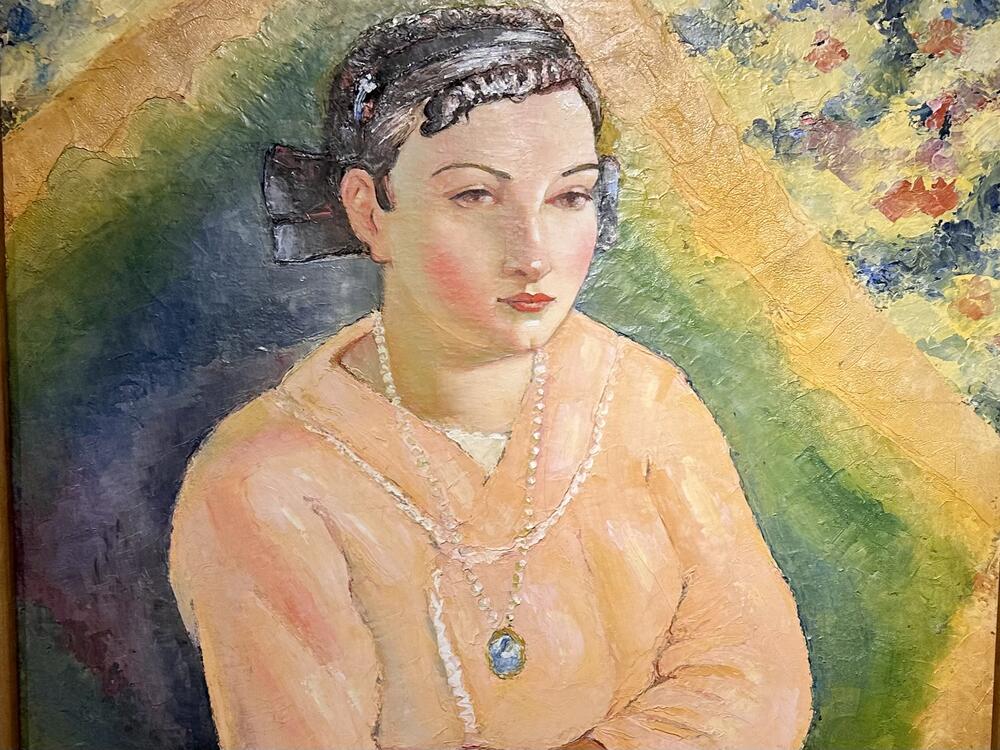
First of all, the joyful overflowing of gentle and strong shades, structured facial features without excesses, all this made me think - Rusinka is long dead, as well as Sava, but this miracle here is able to produce good energy in the viewer. This is not a meeting with the old but for me the new Sava Šumanović.
Between the body and the appetizer
Finally, I come across the painter's most famous works - female nudes and Srem landscapes. I read in the catalog that Sava had problems finding women willing to pose in Šid. In ten years of Šida's creative period, it was the only blonde Slovenian bar singer Beba. Sava had to paint his sensual black women from the sketches he brought back from Paris.
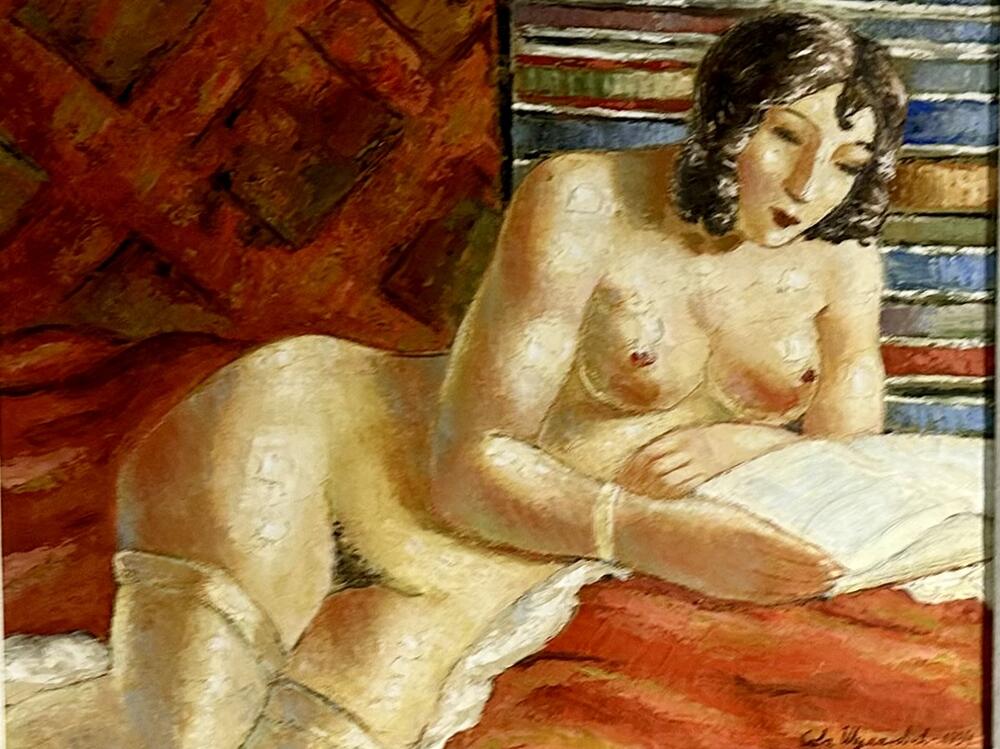
It seems that it produced an unusually good result, as evidenced by the picture in front of me: "Semi-reclining female nude on a divan". It turns out that for the picture created in Šid in 1934, he took a model from Paris in 1929. I don't know about the body, but the face reminds me of a "Rusynka".
After all, Sava Šumanović is the painter who invented the "Srem landscape". His ability to see landscapes in the different light of seasons or periods of the day, his willingness to capture and "freeze" a unique atmosphere, show that the artist traveled a long time looking only for his art, but that he found it completely when he returned home.

"Spring in Šid's gardens" is a pure lyrical homage to all Srem's gardens in bloom. In the catalog for the big exhibition in Belgrade in 1939, the painter called his style "as I know and can", consciously dissociating himself from all the "isms" to which he partly belonged in some phases and of which he had a clear theoretical idea, unlike many of his contemporaries.
A plate for a dead son
When his father dies in 1937, he takes over the work on the farm - the motifs of grape harvesting and working in the fields are self-imposed. Probably, if the painter had survived the Ustasha terror by a lucky chance, he would have painted a lot more. The picture of "Beračica" was drying on the easel when the villains took him away on August 28, 1942. His mother Persida did not accept the news that on August 30, together with more than 120 local Serbs, he was brutally tortured and then shot. According to the testimony of a refugee from Slovenia, Marija Demšhar, who lived with the Šumanovićs at the time they came to get Sava, her mother, for a very long time, even after the official response of the Ustaša state that Sava Šumanović had been shot, set a plate for him every evening and made his bed.
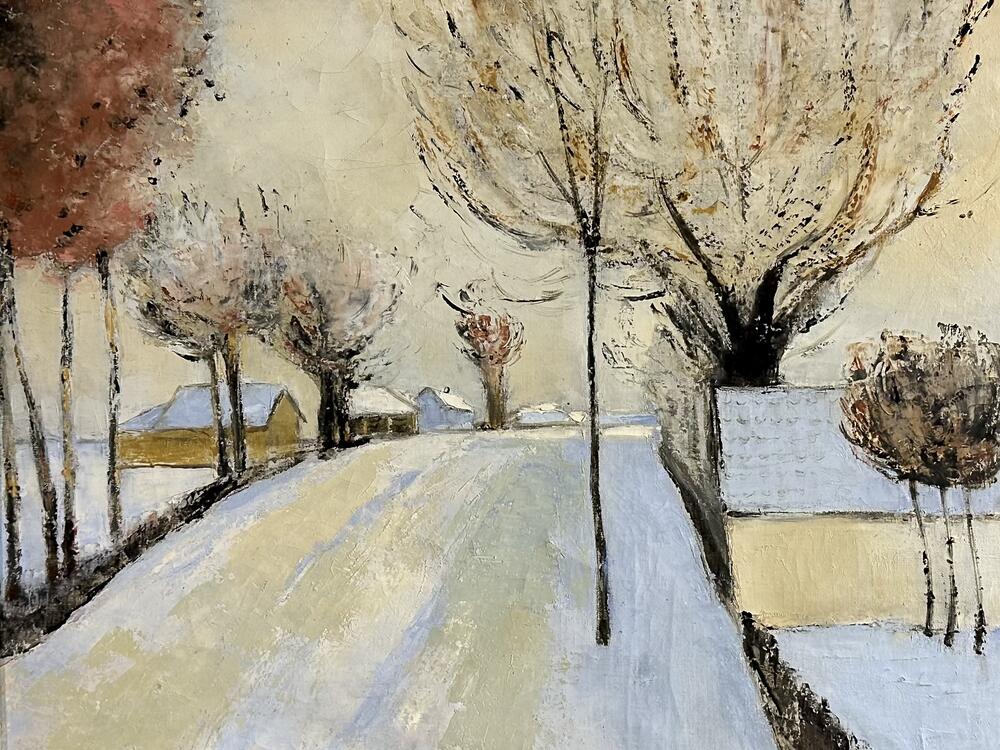
Before leaving, I linger in front of Sava's winter landscapes under the snow. In a way, he was able to paint that unreal silence under the white blanket. To turn the bitter Srem winter into a scene that the observer remembers with joy.
Certainly, painting is like alchemy. Sava Šumanović would find a way to make even these dark shadows of a December day in Leskovac dance on the screen.
Bonus video:



